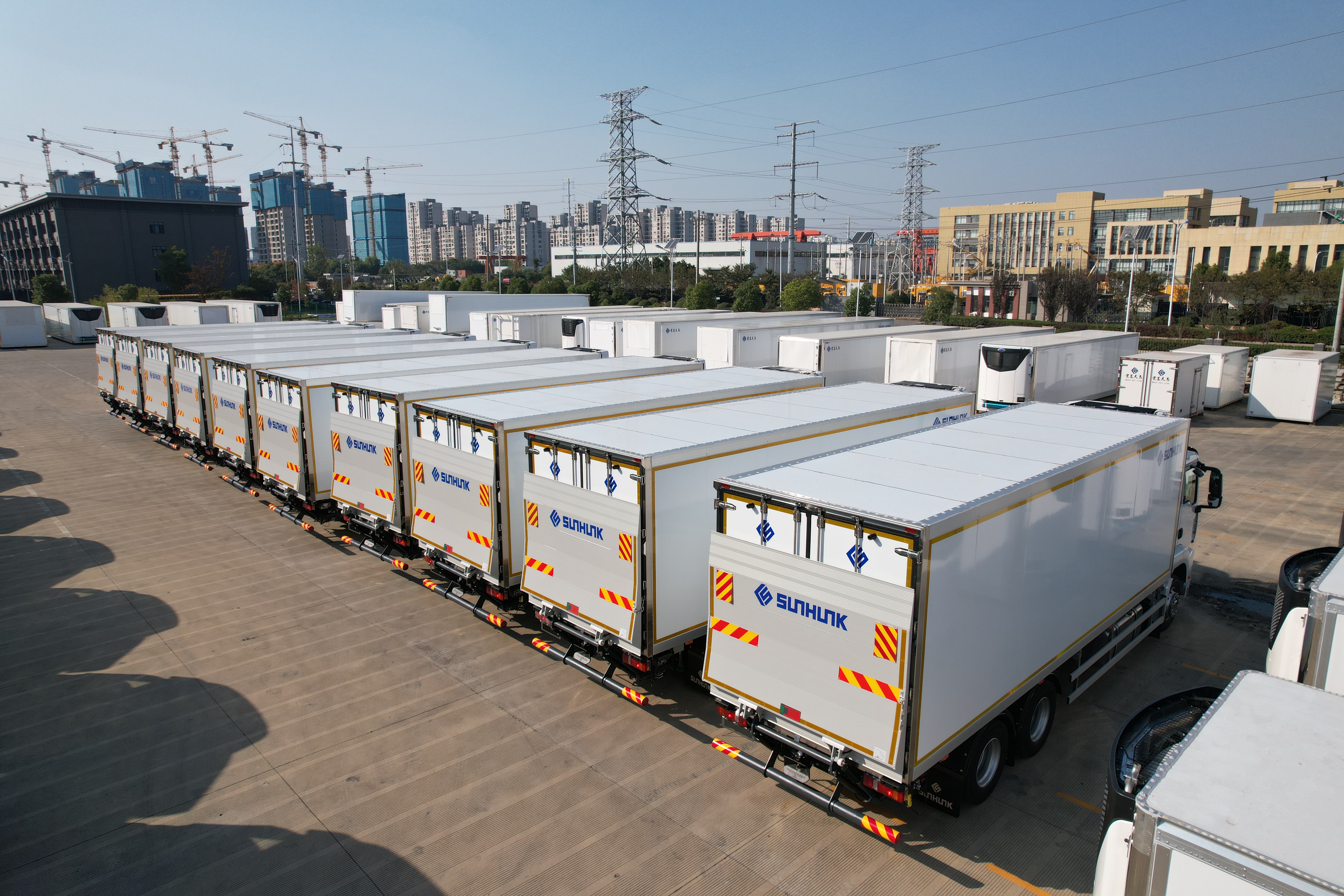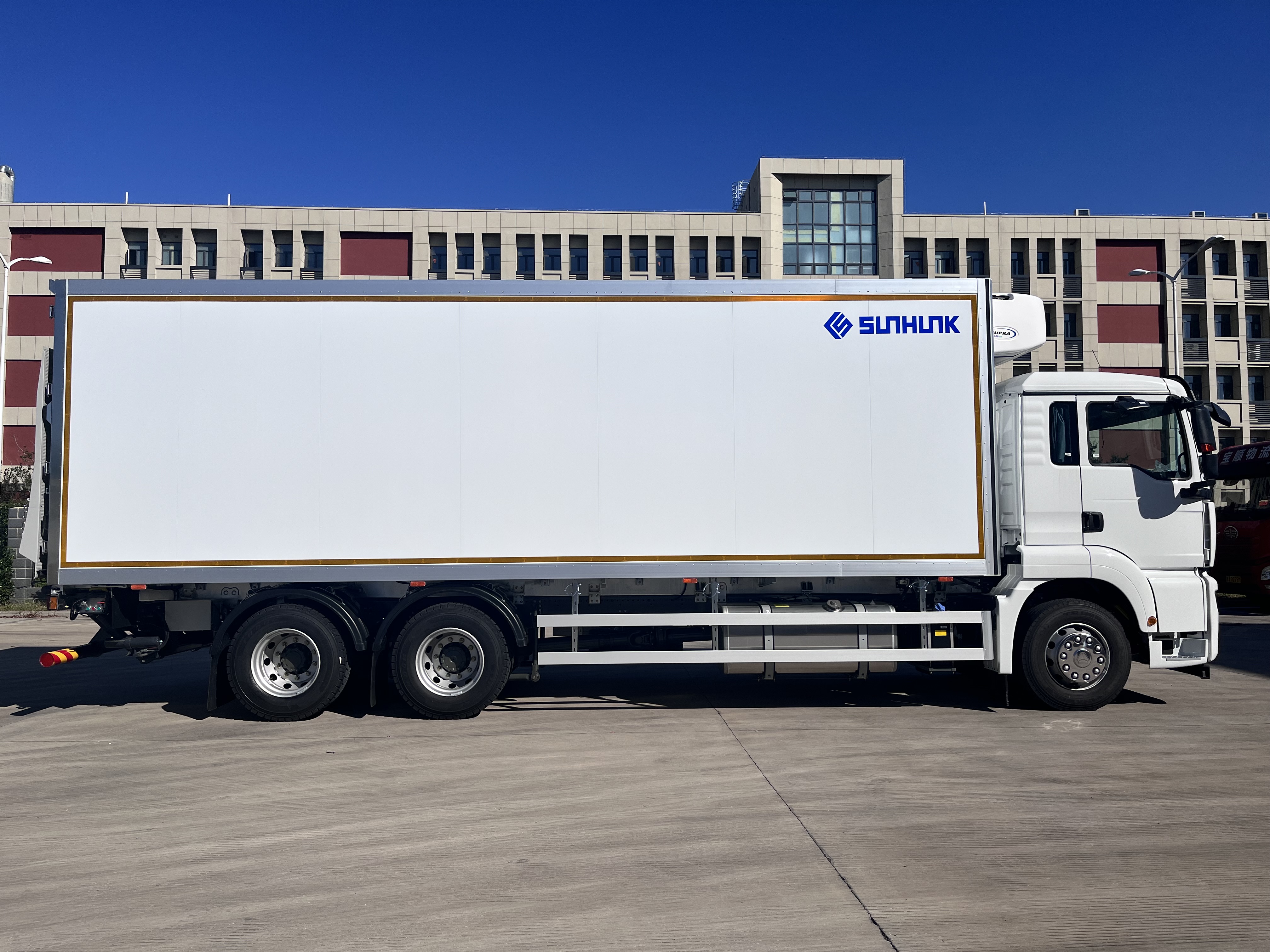- PRODUCTS
- SOLUTION
- SERVICE
- NEWS
- ABOUT US
Installing a 3L body refrigerated truck costs $20,000 to $65,000. A 10-foot setup costs $20,000-$25,000, while 20-foot models reach $50,000-$65,000. Costs include $8,000-$25,000 for the body, $3,000-$15,000 for the refrigeration unit, and $2,000-$7,000 for labor. Custom features increase expenses.
The price of a refrigerated body for a 3L truck is very much dependent on its size, materials used, insulation, and inclusions. A standard 14-foot refrigerated body can be anywhere in the range of $12,000 to $25,000. The smaller ones, say 10-foot bodies, could start at approximately $8,000 to $15,000. For bigger trucks requiring 20-foot bodies, costs may reach $30,000 or even more. High-performance materials, such as fiberglass-reinforced plastic, enhance durability but can increase costs by 10 to 15%. By contrast, lighter aluminum options offer slightly less durability, thereby saving fuel costs but possibly compromising the lifespan of the vehicle when used heavily.
Insulation of the refrigerated body itself directly impacts efficiency and operation costs. The most commonly used insulation material, polyurethane foam, costs approximately $2 per square foot for a 2-inch layer. A 14-foot body would need approximately 300 square feet of insulation at a cost of $600 for basic materials. Upgrading to 4-inch insulation for better thermal performance could raise the cost to $1,200 but could save up to 20% in annual cooling costs for trucks that have to run through hot climates or must maintain low temperatures, such as -18°C for frozen goods.

Capacity and payload influence not only the cost but also choice of a refrigerated body. A 12-foot body can handle up to about 2,500 kilograms of goods depending on the internal configuration and materials used; ideal for small businesses with deliveries of fresh produce or dairy products. For large operations, a 20-foot body will accommodate as many as 6,000 kilograms, with capacity for up to 12-14 standard pallets. The cost difference may run as high as $10,000 between a 12-foot and 20-foot body, but bigger models make a significant gain in logistics efficiency by potentially taking fewer trips.
The refrigeration unit is the most important part of a refrigerated truck, and it greatly affects the initial installation cost and long-term efficiency of operations. A simple refrigeration unit that can maintain temperatures between 0°C and 5°C will cost between $3,000 and $6,000. These units are good enough to carry fresh produce or beverages. Advanced units, intended for frozen goods that require temperatures as low as -18°C, cost in the range of $8,000 to $12,000. For ultra-low temperature units, capable of maintaining -25°C or lower environments, the costs go upwards of $15,000 or more. These systems are normally used for medical or pharmaceutical transport, where precise temperature control is critical.
The cooling capacity of a refrigeration unit, which is measured in BTU, decides the capability of cooling the interior of the truck. A mid-range unit for a 14-foot truck can cool up to 10,000 to 15,000 BTU and works well within ambient temperatures as high as 35°C. Larger trucks or those operating in hotter climates call for units with 20,000 BTU capacities or more. These may be upwards of 20-30% more costly but prevent temperature fluctuations that could cause product spoilage. Energy consumption varies as well, since high-capacity units consume 15-20% more fuel or power, and over time, increase operating expenses.
Powering a refrigeration unit can greatly affect the unit's cost of ownership. Units powered by diesel-commonly used for larger trucks-cost upwards of $1,000 to $3,000 more than their electric counterparts because of their greater energy output. Operationally, however, they burn 0.5 to 1 gallon of diesel per hour, adding around $1,500 per year to the fuel costs of a truck running 40 hours a week. Electric refrigeration units, powered by battery systems or external power sources, are cheaper to operate initially with an average electricity cost of $0.10 to $0.15 per kilowatt-hour. An electric system can save up to $5,000 in energy costs over five years compared with diesel and could be a good option for urban delivery fleets with access to charging infrastructure.
Labor costs to install a refrigerated truck body and a refrigeration unit are quite variable depending on the size of the truck, the complexity of the system, and the region. Labor costs for installing such units on a mid-sized 14-foot truck usually fall between $3,000 and $5,000. Smaller trucks, like those will 10-foot bodies may have labor costs starting around $2,000- $3,000, where the bigger trucks with 20 foot or other specialized bodies, installation cost are often over $6,000. These prices already include the integration of a refrigeration unit, electrical wiring, and sealing for correct insulation and performance.
Installation complications play a huge role in affecting labor time and cost significantly. Basic installations, like setting up a single-compartment refrigeration unit, may involve 20 to 30 hours of work. These would cost in the vicinity of $1,500 to $2,000 for labor alone at an average hourly rate of $75. More complicated installations-for instance, multi-temperature compartments or adding special features, such as shelving or meat hooks-can take up to 50 hours and increase the labor costs to $3,750 or more. Businesses that would want to add in more advanced features should consider these extended timelines and associated labor costs when budgeting.
Regional labor rates also contribute to the differences in cost. In larger metropolitan areas or regions where the living cost is comparably high, skilled labor can have hourly rates upwards of $100-$120, adding 20-30% to the total cost of labor. For instance, putting in a refrigeration system in a city such as Los Angeles or New York might cost $1,000 to $2,000 more than in smaller towns or rural areas where rates average $60 to $80 per hour. Companies in high-cost areas may be able to save money by trucking their vehicles to shops in lower-rate areas, but transportation costs and possible delays should be taken into consideration when making that decision.
These value additions can greatly enhance functionality, but the price varies regarding the specifications and level of customization. Multi-compartment models enable different temperature zones within a truck and are thus very much sought after for carrying mixed cargoes, like frozen and chilled goods. The feature installation costs between $2,500 and $5,000, depending on the number and complexity of compartments. For instance, a two-zone will cost a little over $3,000, whereas its three-zone setup for larger trucks reaches $5,000. It is this very investment that helps logistics companies save on not having to use separate vehicles, thus saving them some $10,000 to $15,000 annually in fleet operations.
Specialized flooring is another important feature for durability and sanitation. Standard Aluminum or stainless-steel floorings, for heavy cargo transportation with easy cleaning, cost at large in the range of 2,000-4,000 dollars for a 14-feet truck. Anti-slip coatings and drainage systems on flooring cost an additional 500 to 1,000 dollars for ventures who transport liquid goods. Installation with these features raises upfront prices but extends the truck operating life by 2-3 years, saving 10-15% in longer-term replacement costs.
For companies that transport carcasses or even hang meat, such accessories as meat rails and hooks are a must-have. Installation of aluminum meat rails in a 14-foot refrigerated body may be close to $1,500-$2,000. Where heavier loads may call for steel options that give durability, the costs can increase up to $2,500. A fully outfitted truck with a full set of hooks and railings could reach up to $3,000, depending on the capacity the load can hold. For smaller to medium-sized meat suppliers, this feature can increase transport efficiency by up to 30%, allowing more products to be delivered per trip.

The total estimated cost of installing a refrigerated body on a 3L truck will depend on the size of the truck, materials, type of refrigeration unit, installation labor, and added features. A basic setup-a 10-foot body with a standard refrigeration unit-would start at approximately $20,000 to $25,000. This includes the body, which costs between $8,000 and $10,000; the refrigeration unit, which costs between $3,000 and $6,000; installation labor, which costs between $2,000 and $3,000; and minor additional features, which cost about $1,000. This setup is perfect for small businesses that need to move fresh produce or dairy products over short distances.
For a mid-sized 14-foot truck, prices range from $30,000 to $40,000. The refrigerated body costs between $12,000 and $15,000, while a higher-capacity refrigeration unit that can maintain frozen temperatures adds $8,000 to $12,000. Installation labor for this size increases to $3,000 to $5,000 because of added complexities such as wiring and insulation. If multi-compartment features are added, expect an additional $2,500 to $5,000. This setup is suitable for businesses handling mixed cargo, such as frozen and chilled products, across longer routes.
Larger trucks, with 20-foot bodies, are an even greater investment, ranging from $50,000 to $65,000. A refrigerated body of this size runs $20,000 to $25,000, and the refrigeration unit adds $12,000 to $15,000. Installation labor increases to $5,000 to $7,000 due to increased workload and advanced system integration. Additional features, including specialized flooring and temperature monitoring systems, add $4,000 to $7,500. To a logistic company or a large-scale distributor, such features mean cargo efficiency and lower operation costs, hence well worth the much higher upfront expense.